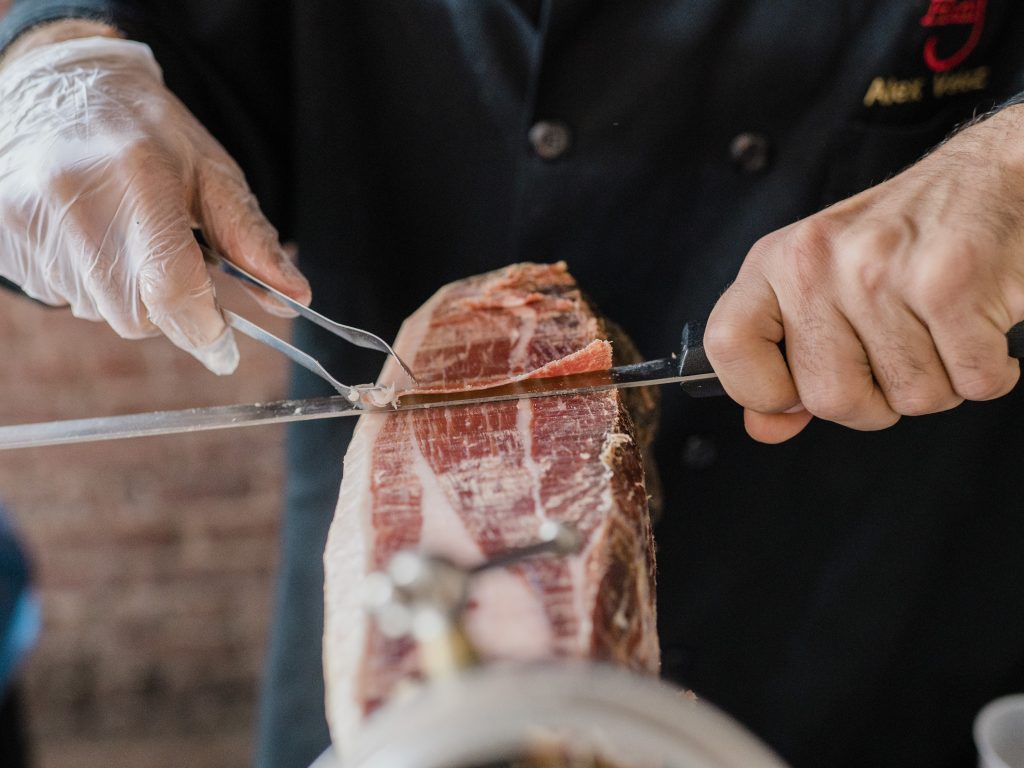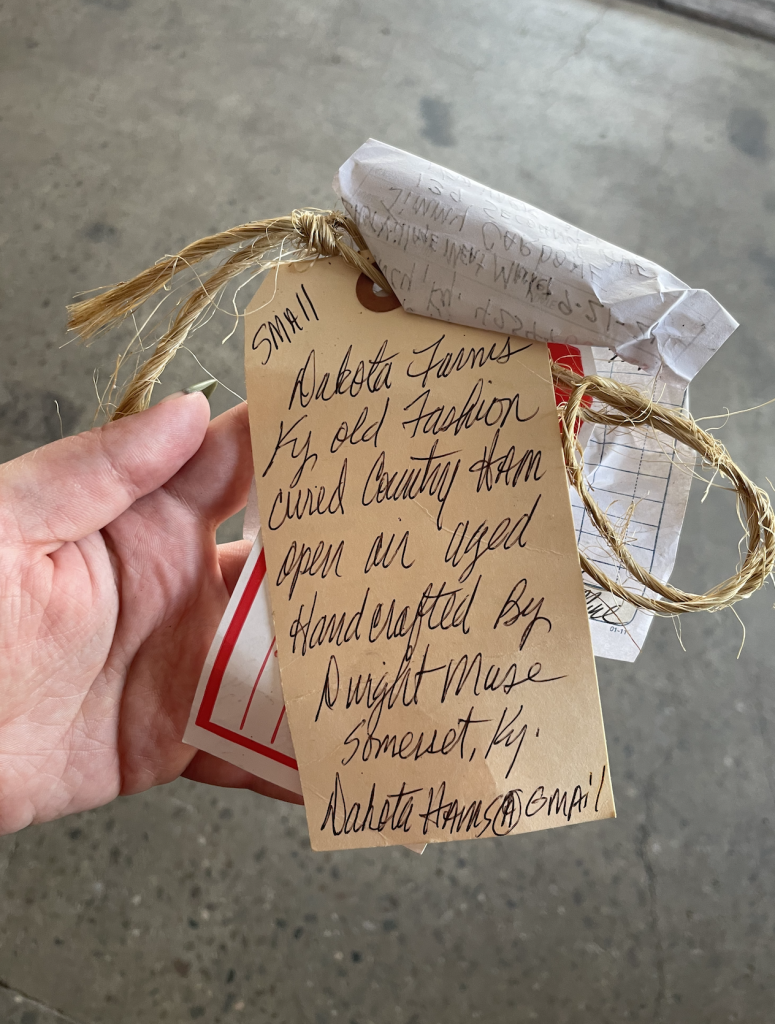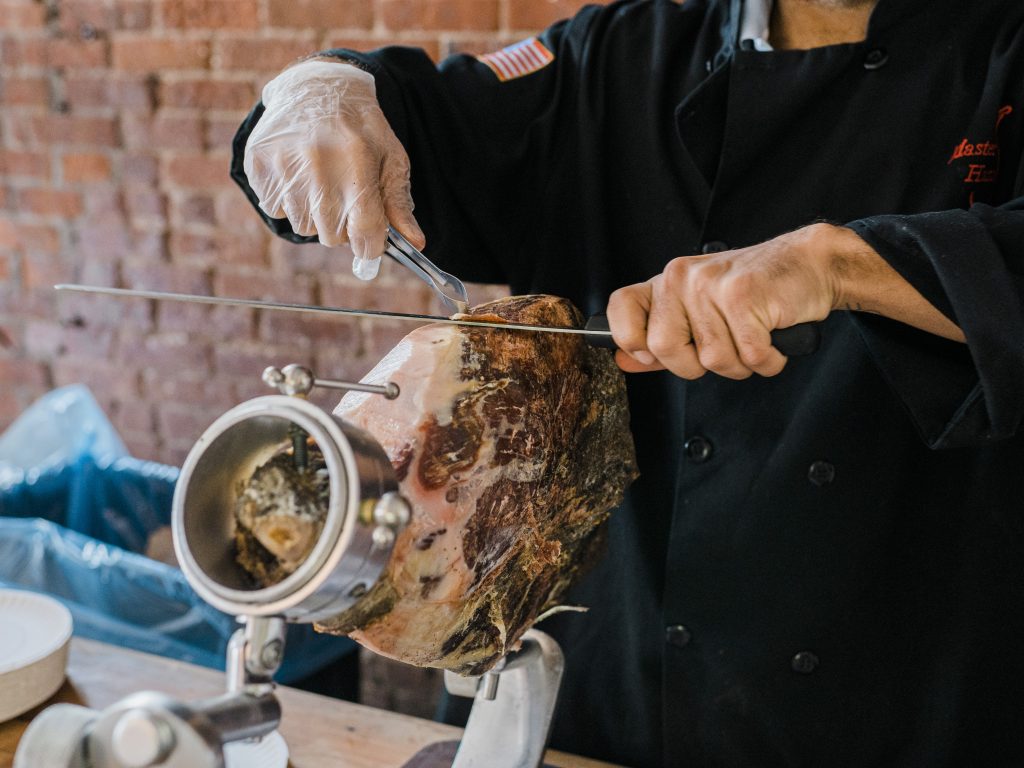Dwight Muse has been sharing his aged country hams from Nancy, KY with Food Karma Projects over the years, and his Dakota Hams are always a huge hit at our events. To close out Ham Month, we talked with Dwight about his history with ham, his favorite way to eat it and how he’s keeping the tradition alive. To hear more about the aging process, which Dwight says is quite simple, check out this video from Friday Night Dinner with Jimmy Carbone.

Food Karma Projects: How did you get into aging country hams?
Dwight Muse: I grew up doing it. I grew up on a farm, and my family did it.
FKP: Do you love it or is it just what you do?
DM: It’s a hobby mainly. I just love to do it and always have.
FKP: Where do you source the pigs?
DM: I source from butcher shops just to get the parts I want.
FKP: What are the most important factors for picking a piece of meat to make a good ham?
DM: There aren’t really a lot of factors, I don’t think. I can make any of them taste good.
FKP: How do you decide how long to age one for?
DW: The weight of the meat is a little bit of a factor, but mainly it’s people’s preference. Some like them older, some don’t.

FKP: What changes with age?
DM: The older ones have more of a funky and umami taste and smell, which is a good smell. It gets more intense, the flavor profile changes the older it gets.
FKP: What’s the oldest you’ve gone?
DM: I’ve got one hanging right now that’s probably getting close to five years old.
FKP: Do you have a personal preference for age?
DM: I like them in the 20 month range. That’s my preference because I eat them fried a lot. I like them older, too, for charcuterie boards and so forth. It mainly just intensifies more. The young ones still have the same flavor profile, it’s just less intense.
FKP: How have you connected with restaurants and vendors, is it all word of mouth?
DM: Yes, I don’t do any advertising.
FKP: How are your hams unique?
DM: I grew up eating them so I can’t say. I like to eat other people’s too to see what theirs taste like. I’m the fourth generation that’s done this, going on fifth, so it’s been in the family. Over the years, I’ve changed the recipe some to suit the flavor profile that I wanted. I’ve been doing it on a regular basis since ‘92 or ‘93.
FKP: What was your other career?
DM: I drove a truck for a long time and I had a flooring business. I started doing the hams more on a regular basis when I sold my trucking business because normally I’d just do a few for Christmas.

FKP: How many do you do in a year or have hanging at one time?
DM: I usually try to keep about 30 in stock aging.
FKP: Do you start more when you send some out?
DM: I just cure in the fall and spring. In the winter and summer, I don’t cure. I try to cure them in batches when I can do it when it’s cool weather. I try to get my stock back up that way and let them age because they have to age two to four years. I hadn’t cured much last year at all. I just cured two batches and I don’t cure a lot at one time. The most at one time would be eleven and sometimes it’s five or four or six but never more than eleven at once because I do all the work myself.
FKP: Is there a lot of tending or mostly waiting?
DM: Just patience and routine checking for smell and so forth. That’s it, mother nature does the rest. I’m just the enabler of getting there.
FKP: Do you know a lot of people who grew up doing this and are still or do you feel like you’re preserving a tradition?
DM: I’m probably keeping the tradition alive in our family because I’m the only one who does it now. I have brothers and sisters and nieces and nephews and nobody is interested in it anymore.
FKP: Do they appreciate that you do it and like eating it?
DM: Yeah, they’re always around when you’ve got a knife out to cut one! I got my name (Dakota Hams) from my great grandmother on my mom’s side because that was her first name and this is her recipe.
FKP: Is there anything about country ham that you think people don’t know and should know?
DM: They’re awful good to eat! You can eat them other than frying them like a lot of people grew up doing. I still like fried ham, but the other way is good, too. I like it for seasoning in greens and beans. I even cut up little chunks and put it in cornbread sometimes.
Any time you have the opportunity to learn how to do this, do it, even young kids, because you can learn or be taught by someone how to do it and carry it on.
